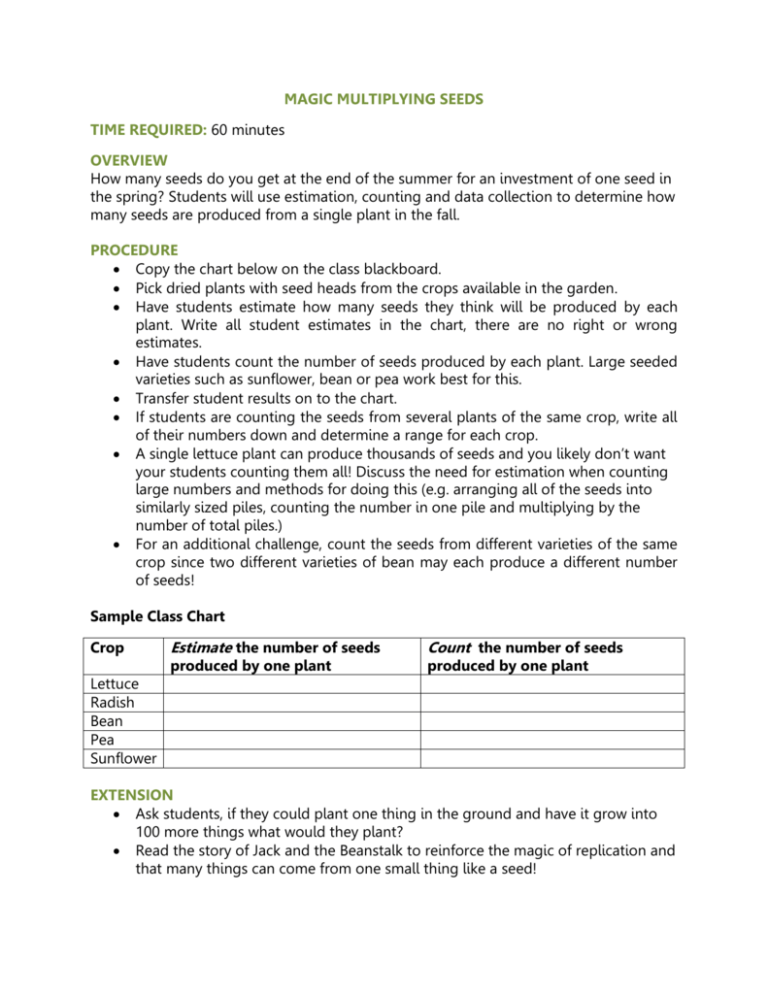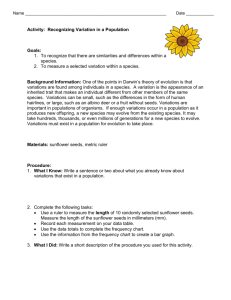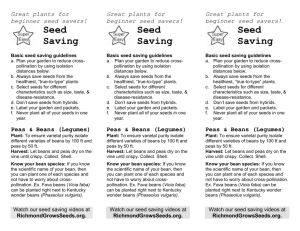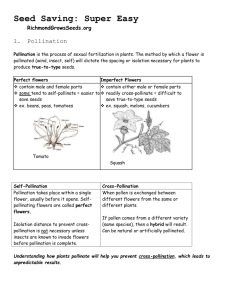Word
advertisement

MAGIC MULTIPLYING SEEDS TIME REQUIRED: 60 minutes OVERVIEW How many seeds do you get at the end of the summer for an investment of one seed in the spring? Students will use estimation, counting and data collection to determine how many seeds are produced from a single plant in the fall. PROCEDURE Copy the chart below on the class blackboard. Pick dried plants with seed heads from the crops available in the garden. Have students estimate how many seeds they think will be produced by each plant. Write all student estimates in the chart, there are no right or wrong estimates. Have students count the number of seeds produced by each plant. Large seeded varieties such as sunflower, bean or pea work best for this. Transfer student results on to the chart. If students are counting the seeds from several plants of the same crop, write all of their numbers down and determine a range for each crop. A single lettuce plant can produce thousands of seeds and you likely don’t want your students counting them all! Discuss the need for estimation when counting large numbers and methods for doing this (e.g. arranging all of the seeds into similarly sized piles, counting the number in one pile and multiplying by the number of total piles.) For an additional challenge, count the seeds from different varieties of the same crop since two different varieties of bean may each produce a different number of seeds! Sample Class Chart Crop Estimate the number of seeds produced by one plant Count the number of seeds produced by one plant Lettuce Radish Bean Pea Sunflower EXTENSION Ask students, if they could plant one thing in the ground and have it grow into 100 more things what would they plant? Read the story of Jack and the Beanstalk to reinforce the magic of replication and that many things can come from one small thing like a seed!











